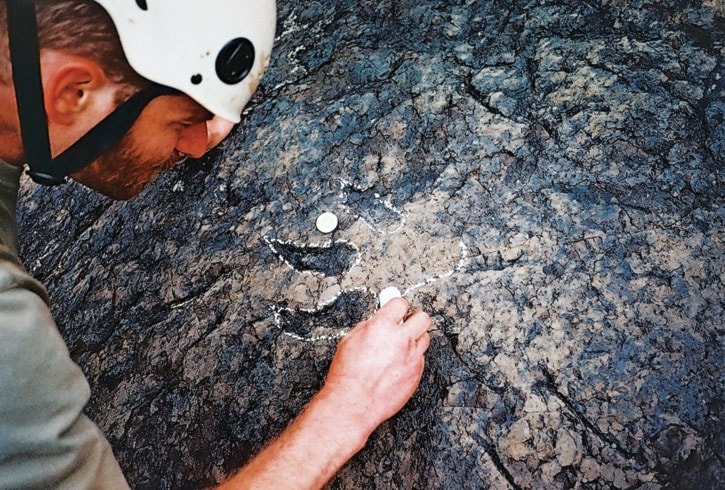As soon as she started digging into the legal battle faced by a doctor who found dinosaur tracks in a B.C. park, Vivien Lougheed knew she had stumbled on a Jurassic-size story.
“I did some research on it and found holy Toledo—there’s a lot of amateur palaeontologists who are unhappy with the situation in British Columbia,” she says.
In Sidetracked: The Struggle for BC’s Fossils, Lougheed uncovers the egos, money and science behind fossil hunting in B.C. and North America. The Prince George writer will talk about her new book Oct. 14 at the Houston Public Library.
Paleontological politics were a far cry from Lougheed’s previous writing, which include travel stories from Bolivia and a hiking guide to Kluane National Park. But Lougheed was intrigued.
“Amateurs find almost everything,” she said. “The professionals don’t have time.”
One such amateur is Dr. Garnet Fraser, a medical doctor who was hunting with a friend when they came across a set of dinosaur tracks on a rock wall in Kakwa Provincial Park. Several species of dinosaurs made the tracks, and they include one unbroken set of 26 paces.
Lougheed centres her book around Fraser’s discovery and his following struggle with professionals in the field.
In Canada, people can legally keep or sell common fossils. Rare fossils are protected by the Cultural Property Act, but Lougheed said that requires a palaeontologist to size up up the find. There are just two working in B.C. right now, she said.
“Trying to keep everything just for the scientists is unfair,” she said.
After researching the story of Dr. Fraser and other amateurs across North America, Lougheed began to advocate for a system that welcomes amateurs.
“If amateurs are not kept as part of the game, they’re not going to give anything over,” she said. “And you can’t blame them.”
Some palaeontologists would prefer that all fossil sites be protected, she said, and they have valid concerns.
“You might have a rare or important species that doesn’t get to the scientist,” said Lougheed.
Some significant fossils do wind up in private collections, she added. And excavating a 160-million year old fossil is a delicate job that could easily be mishandled by someone with no training.
Still, Lougheed said B.C. already has commercial digs that get the best of both paleontological worlds—the unpaid enthusiasts and the researchers at universities and museums.
At the McAbee site near Cache Creek, anyone can dig for fossils for a small fee. A site manager reviews every fossil before it leaves, keeping any standout findings and sending them to scientists to study.
More fossils get studied that way than they do in places like Drumheller, Alberta, she said.
“We can’t make private estates for the professionals to go and spend two weeks or a months out of the year,” she said.
At the Drumheller site known as “Dinosaur Alley,” only Phd candidates can work on important digs. That means some fossils may be left to erode between diggings, she said.
Lougheed is confident people in the field can find a compromise for B.C.. She also encourages amateurs to take up the fossil-hunting habit.
“Fossils are everywhere,” she said.
